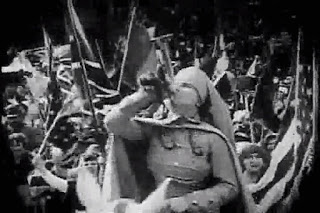A young Emma Goldman in her mug shot after her arrest for conspiring with her lover Alexander Berkman in an assassination attempt on steel baron Henry Clay Frick.
Note—I have posted this poem before, but the two women are particular favorites of mine and I immodestly think that the poem is one of my better efforts. I also think that they would be astute commentators on the attempted re-subjugation of women by the Supreme Court and Red State governors and legislators. Emma, of course, a champion of free love and sexual liberation, would never have had faith in the courts to protect women. An advocate of militant direct action, she would be loudly calling for a real revolution. Helen, the Wobbly and Socialist, might be supposed to be more moderate, but I wonder if she really would. She might recommend the ballot box as a defensive action, but she also saw the need for a revolution that would literally “Build a new society in the shell of the old.”
Emma Goldman, whose grave I have visited on pilgrimages to the Haymarket Memorial in Forest Home Cemetery, and Helen Keller, who has fascinated me since seeing The Miracle Worker and reading a paperback biography I ordered from a Scholastic Book Club flyer shared a common birthday on June 27.
You know, if you have visited here before, that such calendar coincidences trigger an inexplicable urge to commit poetry.
Helen Keller as a student at Radcliffe was already world famous for her astounding achievements overcoming blindness and deafness.
Most people recognize Goldman’s name as America’s most famous anarchist. They may be surprised to learn that she was also a celebrated lecturer whose talks on theater, religion, women’s rights, and free love drew as much attention in their day as her calls to smash the state and end capitalism.
Goldman was such a compelling writer and public figure that even the capitalist press was eager to publish her fiery essays.
Keller’s profound advocacy of Socialism and the IWW has largely been whitewashed from her public image. But that is changing as folks on the left slowly become aware that she was a comrade and fellow worker.
Helen Keller as a Joan of Arc type hero leading the working people of the world to triumph in an allegorical scene from her 1919 silent film Deliverance. That was the height of the post World War I Red Scare which saw hundreds imprisoned, the IWW and Socialist Party suppressed, and "alien" radicals like Emma Goldman deported. Yet Helen persisted
In these dark times it is good to remember our Sheroes.
Birthday Sisters Emma and Helen
Emma Goldman June 27,1869, Konvo, Imperial Russian Lithuania
Helen Keller, June 27, 1880, Tuscumbia, Alabama, USA
If I can't dance, I don’t want to be part of your revolution—Emma Goldman
…there is no king who has not had a slave among his ancestors, and no slave who has not had a king among his.—Helen Keller.
You might not suspect that they were sisters.
Emma with her square jaw and carelessly attended hair,
gray eyes peering through
those old fashion pinze nez spectacles
perched upon her nose,
the urban smells of coal fire,
delivery horse dung and workman’s sweat
clinging to her frumpy clothes,
speech meticulously enunciated
barely betraying here and there
a Yiddish trace.
Helen, who would have been a delicate beauty
in her youth
were it not for those disconcerting,
unfocused eyes,
Confederate grace and slave cotton wealth
a mantle on her delicate shoulders,
the sweet lilt of a gentlewoman
lost to grunts and moans.
But wait….
These two knew what it was like
to be a stranger, an exile,
an alien other
and ultimately what it was like
to be a celebrated curiosity.
They learned as a Jew
and as a side show freak,
as women, after all,
what oppression was
but also that they
were not alone—
They swam in a sea of oppression
and learned early
of the solidarity of the school
against the sharks
that would consume them.
Maybe the world expected little else
from the Jewess
who threw her lot early
with the filthy anarchists
who made bombs
and plotted attentats
like that job she pulled
passing the pistol
to her lover, for god sake,
to plug Henry Clay Frick.
But the world was aghast
when the delicate Radcliffe flower
who had charmed Mark Twain,
Alexander Graham Bell,
and Teddy Roosevelt,
raised the Red Flag
and fell side by side
with the laborers,
the unemployed,
the despised—even the Negros!
The atheist anarchist
and the Socialist Wobbly
who dabbled in Swedenborgism
and a mystic Red Jesus
did not agree on details,
they might have enjoyed
a friendly debate
each being a master
of the platform.
But each in her own way
was steadfast to the end
of her long life
for a revolution of liberation
and the ultimate triumph
of beauty.
I imagine sometimes
that as they each
traversed the country
on lecture tour or
vaudeville circuit
if they ever crossed paths
in say, a railway station
in Omaha or a
hotel lobby in Akron
and fell into each other’s arms
sobbing—
“Sister, sister, I have found you!”
—Patrick Murfin




No comments:
Post a Comment